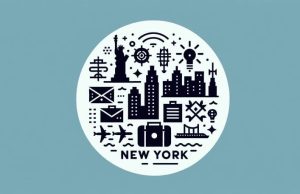The Unseen Epidemic: Addressing the Mental Health Crisis in the Gig Economy
As dawn breaks, the city stirs to the hustle of delivery riders, freelance creatives, and ride-share drivers. These are the faces of the gig economy – a burgeoning sector reshaping the very essence of work, worker, and workplace. But beneath the allure of autonomy and flexibility, there lies an unseen epidemic: the mental health crisis afflicting gig workers, a demographic often neglected when we speak of workplace wellness.
The gig economy promises freedom but delivers a double-edged sword. The autonomy associated with freelancing is counterbalanced by the unpredictability of work and income. Sarah, a graphic designer and a mother of two, articulates the paradoxes of her career choice, ‘The flexibility allows me to be there for my children, but the irregularity of work invites a constant undercurrent of anxiety.’
This anxiety is part of a broader narrative. Studies reveal that gig workers face heightened levels of stress compared to their permanent counterparts, stemming from erratic work schedules and financial instability. John, a ride-share driver from Seattle, shares, ‘Some weeks, I can barely make enough to pay rent. It’s stressful not knowing if I’ll have enough rides to make ends meet.’
The absence of traditional workplace support systems further aggravates the situation. Gig workers often operate in silos, devoid of the camaraderie and collective support found in conventional work settings. Without access to employee assistance programs or mental health days, they are often left to manage their well-being in isolation.
Substantial evidence indicates that these stressors are not just individual struggles but symptoms of a systemic issue within the gig economy. Yet, major gig platforms have been slow to address these concerns, often citing the flexibility and independence offered to workers as a trade-off for the lack of support structures.
This raises pivotal questions: Are gig companies doing enough to support the mental health of their workforce? What responsibility do policymakers bear in regulating this new landscape of work? The silence around these questions is a silence we can no longer afford.
In response, some gig workers have begun forming collectives and support networks, laying the groundwork for a new wave of peer-based mental health resources. Meanwhile, a handful of tech companies are exploring portable benefits systems that offer support irrespective of employment status.
As a society, we must confront this hidden epidemic. Our challenge is to reimagine a gig economy that doesn’t compromise on mental health for flexibility. This entails a collaborative effort from gig platforms, policymakers, and the workers themselves.
Possible solutions may include mandatory mental health coverage, the establishment of gig worker unions, and platforms designed with worker well-being in mind. These are not just ethical imperatives but investments in the sustainability of a workforce that is increasingly integral to our economy.
The future of work hangs in the balance. As we stand at this crossroad, it’s time we ask ourselves: How do we build an economy that works for everyone without leaving our collective well-being behind?
As we put this discourse to the forefront, we invite readers, leaders, and innovators to join us in a critical discussion. It’s not merely about addressing an epidemic; it’s about shaping the future of work to be holistically sustainable for all. After all, the strength of the gig economy lies in the well-being of its workers. Together, let’s ensure their flexibility doesn’t come at the cost of their mental health.






























